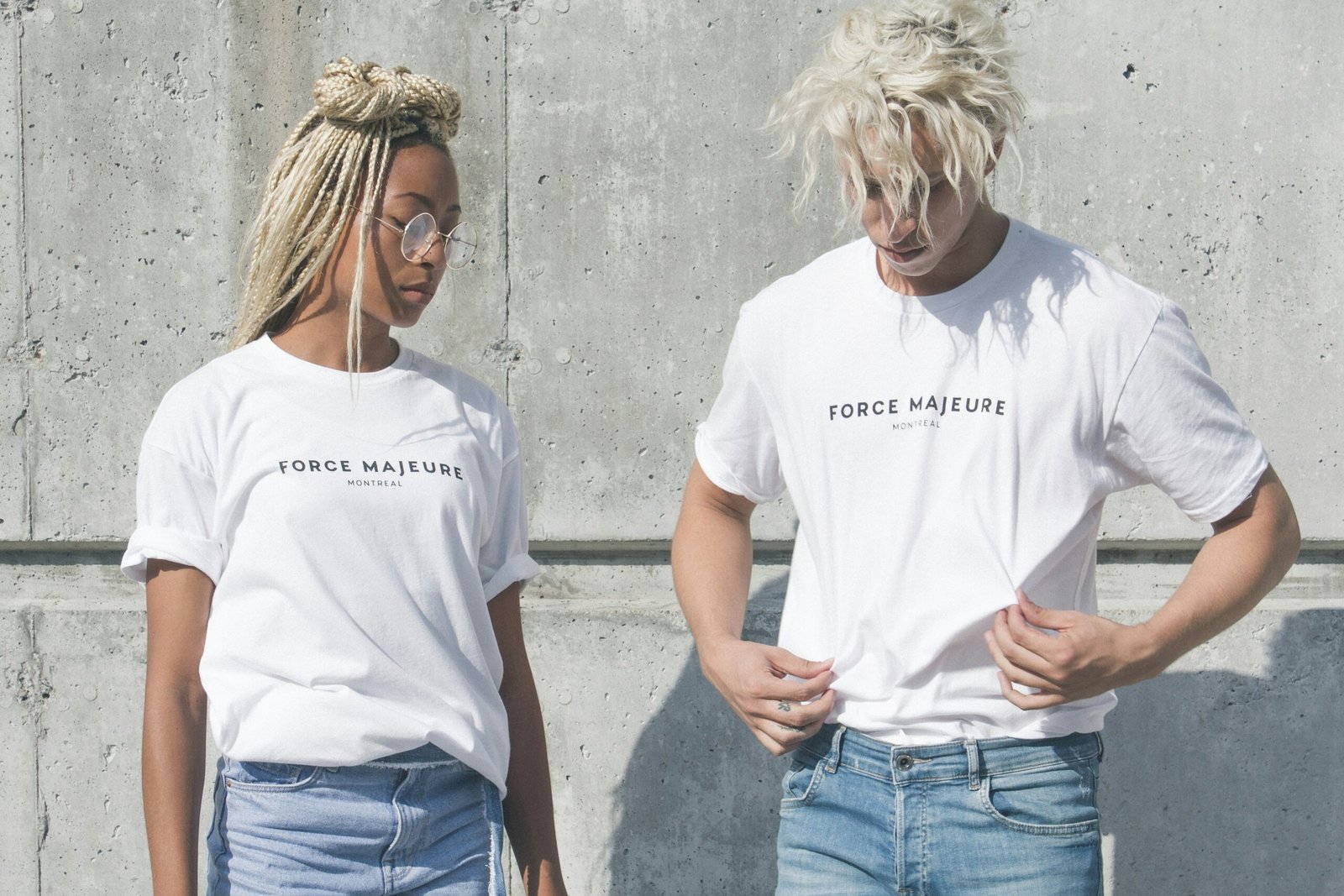
Fashion has always been a way for individuals to express themselves, and in recent years, there has been a noticeable shift in the way men approach fashion. Traditional gender norms are being challenged, and men are embracing a wider range of styles and aesthetics. In this article, we will explore the stories of several individuals who are revolutionizing the male fashion world by crossing traditional boundaries and redefining what it means to dress with style and confidence.
Redefining Masculinity Through Fashion
One of the most prominent figures in the movement to redefine masculinity through fashion is Jaden Smith. The son of renowned actor Will Smith, Jaden has made a name for himself not only as a talented actor and musician, but also as a fearless fashion icon. He has been known to challenge traditional gender norms by wearing skirts and dresses on the red carpet, and his unique sense of style has garnered attention and praise from fashion enthusiasts around the world.
Another trailblazer in the male fashion world is Ezra Miller. The actor, known for his roles in films such as “The Perks of Being a Wallflower” and “Fantastic Beasts and Where to Find Them,” has become a fixture in high-fashion circles. Miller’s androgynous and boundary-pushing approach to fashion has shattered stereotypes and inspired countless individuals to embrace their own unique sense of style, regardless of societal expectations.
Championing Diversity and Inclusivity
As the fashion industry continues to evolve, there is a growing emphasis on diversity and inclusivity. This shift is being spearheaded by individuals such as Indya Moore, a transgender actress and model who has become a powerful voice for change in the fashion world. Moore, who rose to fame with her role in the groundbreaking TV series “Pose,” has used her platform to advocate for greater visibility and representation of trans and non-binary individuals in fashion.
In addition to Moore, model and activist Nyle DiMarco has been instrumental in promoting inclusivity and accessibility in the fashion industry. As a deaf individual, DiMarco has been a vocal advocate for the deaf community and has worked to break down barriers in an industry that has often overlooked individuals with disabilities. His advocacy has helped pave the way for greater inclusivity and representation of diverse experiences in fashion.
Embracing Personal Expression and Individuality
At the heart of the fashion revolution among men is a collective embrace of personal expression and individuality. This sentiment is embodied by individuals such as Harry Styles, the British musician and former member of the band One Direction. Styles has become known for his gender-fluid approach to fashion, often blurring the lines between traditional menswear and more flamboyant, gender-bending styles. His fearlessness in embracing bold colors, statement-making accessories, and unconventional silhouettes has made him a trailblazer in the realm of male fashion.
Similarly, rapper and fashion designer Tyler, the Creator, has carved out his own distinct niche in the fashion world. Known for his eclectic and unconventional style, Tyler has challenged norms and defied expectations at every turn. His willingness to take risks and push boundaries has made him a symbol of unapologetic self-expression and nonconformity in fashion.
As we look to the future of male fashion, it is clear that the boundaries of traditional style are continuing to be pushed and redefined. The individuals highlighted in this article are just a few examples of the many revolutionaries who are reshaping the landscape of men’s fashion, inspiring others to embrace their individuality and dress with confidence, regardless of societal expectations.
Embracing Fluid Gender Expression
One of the most exciting developments in the male fashion revolution is the growing acceptance and celebration of fluid gender expression. Individuals like Lil Nas X, the Grammy-winning musician, have embraced a fluid approach to their style, blending traditionally masculine and feminine elements to create a unique and captivating aesthetic. Lil Nas X’s bold fashion choices, which have included everything from rhinestone-encrusted bodysuits to gender-bending red carpet ensembles, have challenged traditional notions of masculinity and inspired a new generation of fashion-forward individuals to explore their own unique style.
Similarly, the singer and actor Harry Styles has become a poster child for the embrace of fluid gender expression in fashion. Styles, known for his eclectic and often androgynous style, has been praised for his ability to seamlessly blend traditional masculine and feminine elements in his wardrobe. From ruffled blouses to bold, colorful suits, Styles has demonstrated that the boundaries between “men’s” and “women’s” fashion can be fluid and ever-changing.
Subverting Sartorial Norms in the Streetwear Realm
While the high-fashion world has been the primary stage for many of the fashion revolutionaries mentioned so far, the streetwear scene has also become a hub for individuals who are challenging traditional sartorial norms. One such figure is A$AP Rocky, the acclaimed rapper and style icon, who has blended elements of hip-hop, punk, and high fashion to create a unique and influential aesthetic. A$AP Rocky’s ability to seamlessly merge these disparate influences has earned him a reputation as a tastemaker and trendsetter, inspiring countless individuals to rethink their own approach to fashion.
Another streetwear trailblazer is Virgil Abloh, the former artistic director of Louis Vuitton’s menswear line and the founder of the influential streetwear brand Off-White. Abloh’s work has been lauded for its ability to bridge the gap between high fashion and street culture, creating pieces that are both visually striking and culturally relevant. Through his innovative designs and collaborations, Abloh has challenged the traditional hierarchy of the fashion industry and paved the way for a new generation of fashion innovators.
Elevating Diversity and Representation in Luxury Fashion
While the male fashion revolution has been gaining momentum in the streetwear and high-fashion realms, it has also found a foothold in the world of luxury fashion. One of the most prominent examples of this trend is the rise of designer Ozwald Boateng, a British-Ghanaian tailor who has become renowned for his impeccable bespoke suiting and his commitment to elevating the representation of Black individuals in the luxury fashion industry.
Boateng’s work has been celebrated for its ability to blend traditional tailoring techniques with a modern, contemporary aesthetic. His designs have been worn by a diverse range of high-profile clients, from politicians to celebrities, and his commitment to promoting diversity and inclusion in the fashion industry has made him a respected and influential figure in the field.
Another luxury fashion designer who has been at the forefront of the male fashion revolution is Grace Wales Bonner. The British-Jamaican designer’s eponymous label, Wales Bonner, has garnered critical acclaim for its thoughtful exploration of Black identity, culture, and history through the medium of fashion. Her collections, which often feature intricate embroidery, rich fabrics, and subtle references to traditional African and Caribbean styles, have been praised for their ability to challenge Western-centric notions of luxury and masculinity.
Embracing Queer Aesthetics and Subcultures
As the male fashion revolution has gained momentum, it has also intersected with the growing visibility and acceptance of LGBTQ+ communities. Individuals like Alessandro Michele, the creative director of Gucci, have been instrumental in this process, using their platforms to elevate and celebrate queer aesthetics and subcultures within the fashion industry.
Michele’s work at Gucci has been characterized by a bold, eclectic, and often androgynous approach to fashion, which has resonated with LGBTQ+ fashion enthusiasts around the world. His collections have featured a diverse range of models, including transgender and non-binary individuals, and have often incorporated subtle references to queer iconography and subcultures.
Similarly, the designer Palomo Spain has gained attention for his unapologetically queer and gender-fluid approach to fashion. Palomo’s collections, which often feature extravagant, theatrical pieces that challenge traditional notions of masculinity, have become a symbol of the LGBTQ+ community’s growing influence in the fashion industry.
The Future of Male Fashion: Towards Greater Inclusivity and Innovation
As the male fashion revolution continues to gather momentum, it is clear that the future of fashion is one that is increasingly inclusive, diverse, and innovative. The individuals and designers featured in this article have paved the way for a new generation of fashion enthusiasts and creators to challenge traditional boundaries and redefine what it means to dress with style and confidence.
Whether it’s through the embrace of fluid gender expression, the subversion of sartorial norms, the elevation of diversity and representation in luxury fashion, or the celebration of queer aesthetics and subcultures, the male fashion revolution is transforming the industry and inspiring a new wave of fashion-forward individuals to express themselves in bold and empowering ways.
As we look ahead, it is exciting to imagine the new frontiers that will be explored in the world of male fashion. Will the boundaries between “men’s” and “women’s” fashion continue to blur, giving rise to a more inclusive and fluid fashion landscape? Will the streetwear scene continue to drive innovation and cultural relevance in the industry? And how will the luxury fashion world adapt to the changing tides of diversity and representation?
Only time will tell, but one thing is certain: the male fashion revolution is here to stay, and its impact on the industry and society as a whole will only continue to grow in the years to come.


